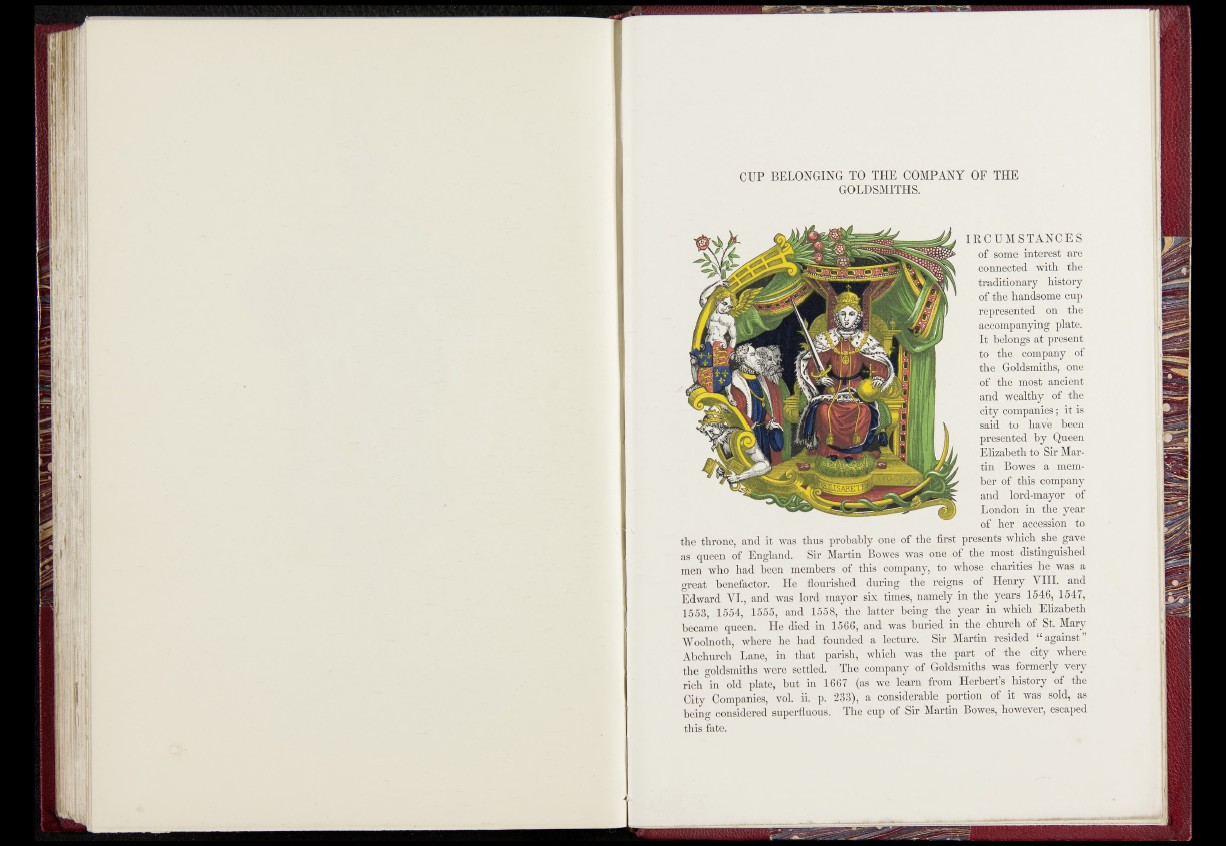
OXJP BELONWG' TO HQCOMPAX®?©F THE
I s
■ Jof some* interest, are
aCTConmored ’with ’the
of,ih ’"h m 1" 'ini i lip
on the
mpanyiiig plate.
; It* belong- at,present
'Vto^tliet company ||||P
!%'. of^-the j m ^ tlant-fejit
anil womprypi^ ^ yel
; it, is'
W B ^ w t vh ^ B been
Queen
Elizabeth to^Sir^Mar-l
’a inem-
^-jybr of tliiwj company
and lord-mayorj!, of
jgpKdndbn- in ^we1, year
of her acce's'ijimt: to
the throne., and it was thus probably one of the first presents* which |s®3 '^ave
as 'queen’ of'"England.-. ’’Sir Martin Bowes-was onie-of t^ ^ fow distinguished
men "who had been ’ip embers of this company,. to„\ a
great benefactor. He Nourished during the reigns of Henry YIH- and
Edward VI., and was lord« mayor six times, namely in^the ye|p ^ ^ 46, 1547,
1558, 1554, 1555, and 1558, the latter being the year in which Elizabeth
became queen. He died in 1566, and was buried in tK&, church^o^ St. Mary
Woolnoth, where he had founded a lecture. Sir Martin-residedagainst”
Abchurch Lane, in' that parish, which was fhe part of 4hef city* where
the goldsmiths were settled. ^ 1 |\ company of Goldsmiths was formerly very
rich in old plate, but in 1667 (as we learn from Herbert’s history of the
City Companies, voL li. p. 238), a considerable portion l § |was s°ld, as
being considered superfluous. The cup of Sir Martin Bowes; however, escaped
this fate.